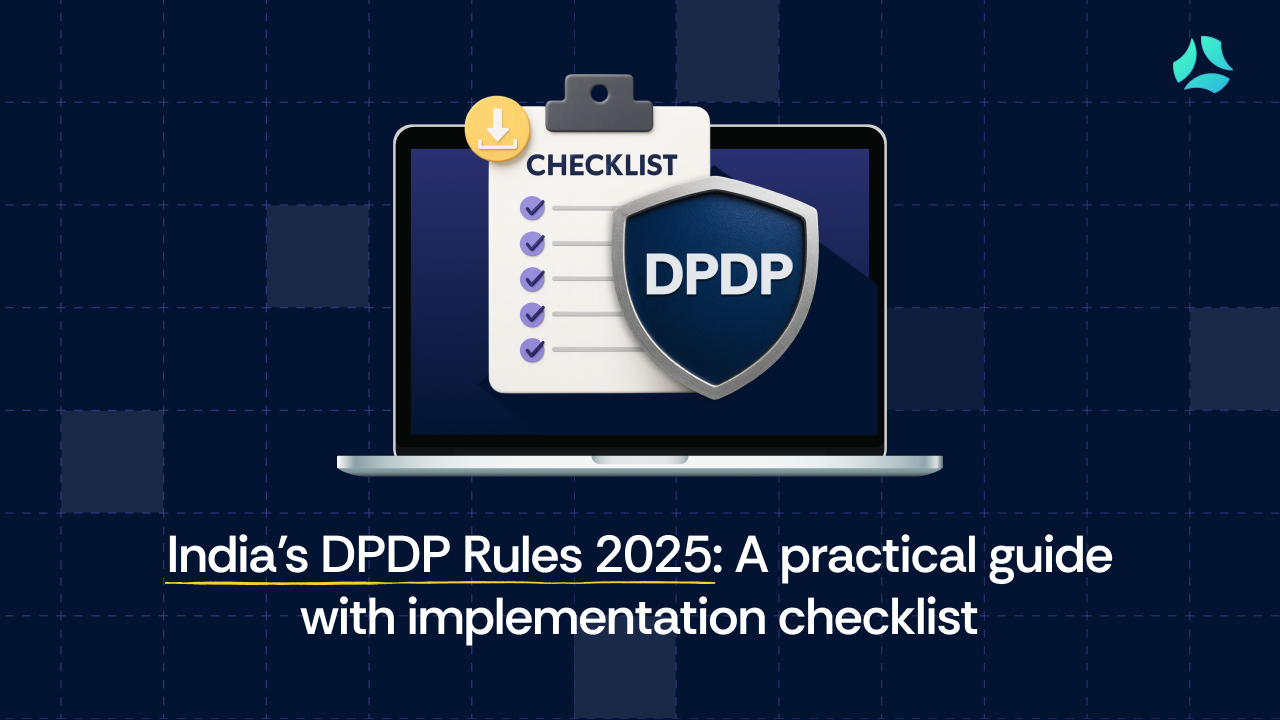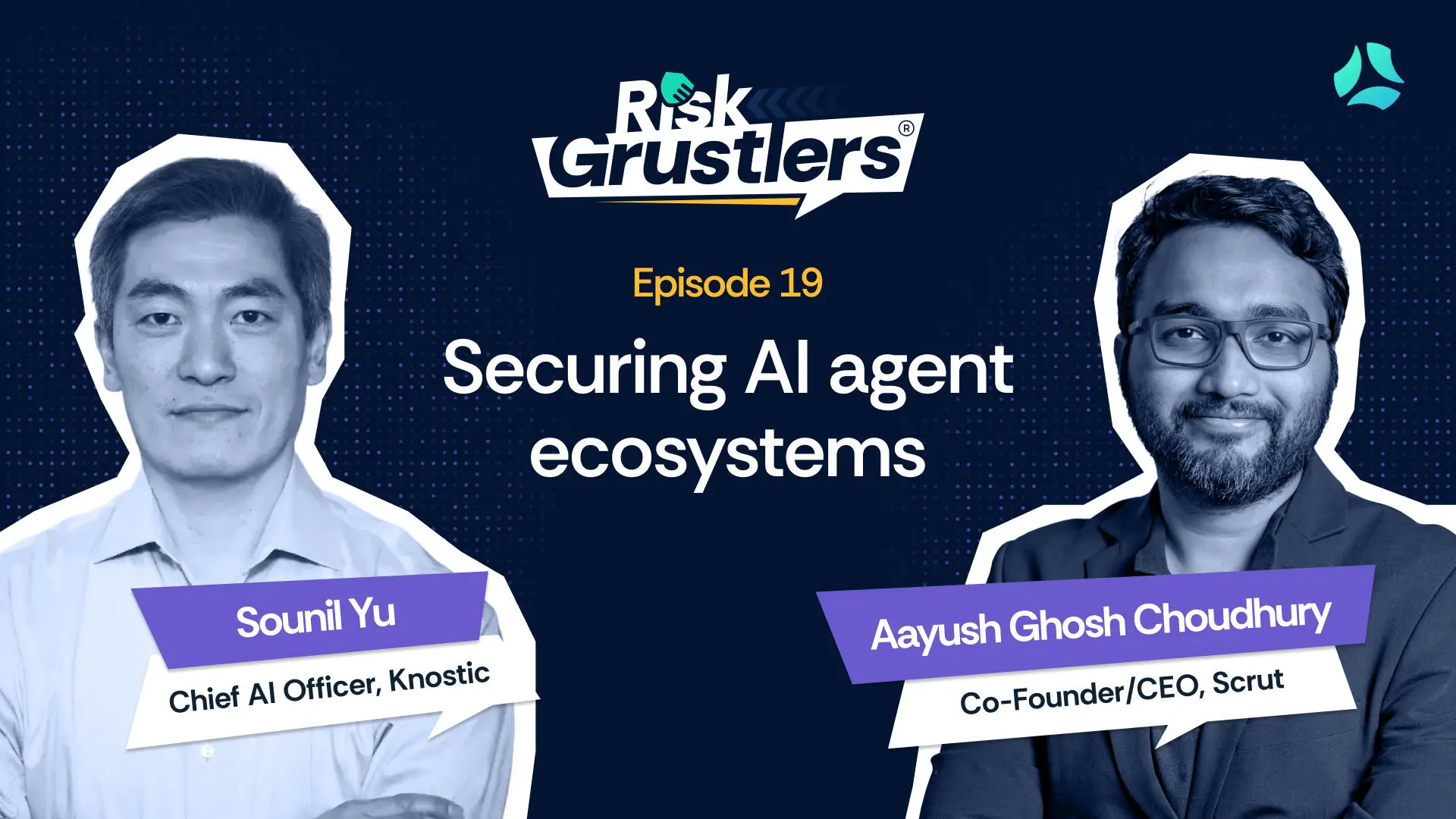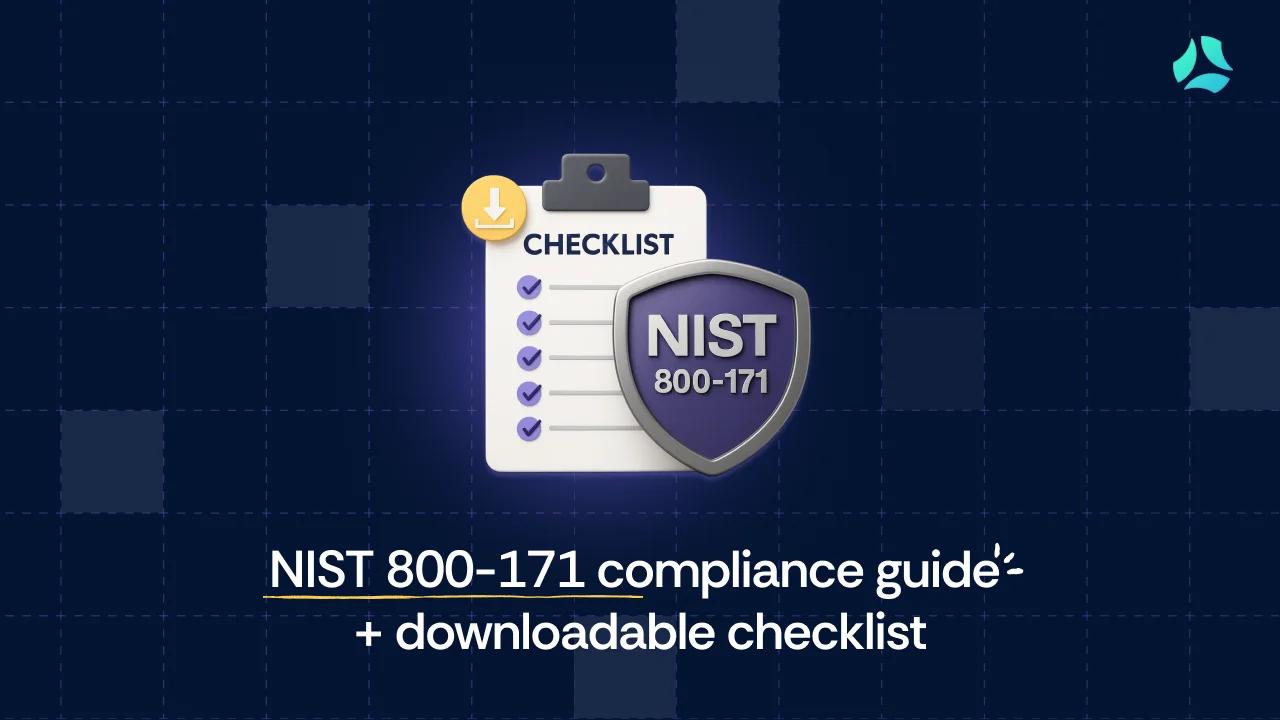How CISOs can leverage AI for third-party risk management

Effective third-party risk management is crucial for organizations in today's fast-paced cyber environment not just from a compliance perspective but also from a security perspective. It helps mitigate risks from third-party vendors, ensure compliance, and protect sensitive data.
However, traditional manual third-party risk management processes are slow and error-prone. They result in incomplete assessments and delayed responses to risks, leaving organizations vulnerable to cyber threats and costly breaches.

To address these pressing issues, embracing advancements in AI is essential. Innovations like machine learning for improved risk assessment, automated vendor questionnaires, and AI-driven analytics are transforming Governance, Risk, and Compliance (GRC). Organizations that adapt to these developments are in a better position to strengthen their security posture and prepare for future vendor-related challenges.
Challenges in manual third-party risk management
Traditional third-party risk management processes present several significant challenges that hinder effectiveness and efficiency:
1. Time-consuming questionnaire management
Creating, reviewing, and tailoring vendor questionnaires is a tedious process. Without personalization, these questionnaires often lead to inaccuracies, wasting valuable time and resources.
2. Incomplete and inaccurate vendor submissions
Vendors frequently submit minimal or incorrect responses, which necessitates extensive follow-up. This prolongs the assessment process and increases the risk of overlooking critical issues that could compromise security.
3. Manual review errors
The manual review of hundreds of questionnaire responses is time-intensive and prone to errors. These mistakes can result in miscalculated risks, leaving organizations vulnerable to potential threats.
4. Inefficient mitigation processes
Mitigating identified risks is typically handled manually, leading to inconsistencies and delays in task creation and management. This inefficiency can create gaps in the security posture, allowing vulnerabilities to persist longer than necessary.
How AI can help with managing vendor risks
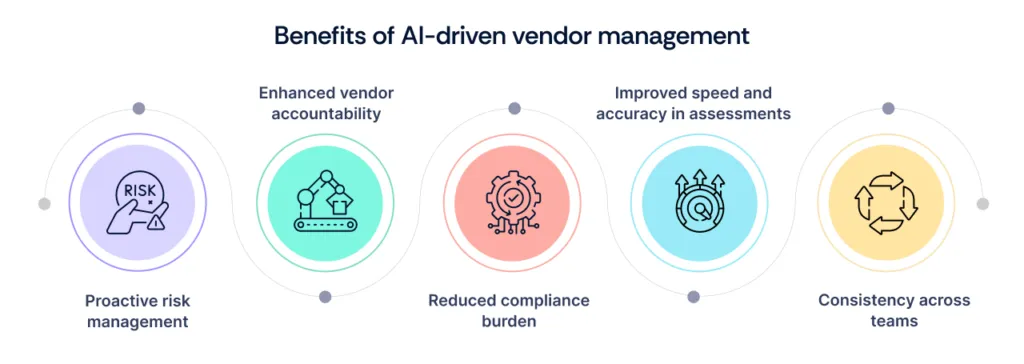
As organizations face increasingly sophisticated cyber threats and the need for comprehensive security measures, we outline some aspects of third-party risk management that AI aids.
1. Proactive risk management
GRC leaders can identify and prioritize high-risk vendors before issues emerge. This could enable strategic and proactive decision-making rather than reactive measures.
2. Enhanced vendor accountability
Automated, tailored questionnaires can ensure higher-quality vendor responses. This could provide CISOs with clearer insights into vendor security postures.
3. Reduced compliance burden
AI can help flag inaccurate responses and suggest mitigation steps, This could allow GRC teams to minimize time spent on repetitive tasks and allocate resources to higher-priority initiatives.
4. Improved speed and accuracy in assessments
Automating risk evaluations can help in accelerating completion of vendor assessments. This could enable GRC teams to concentrate on critical areas without sacrificing accuracy.
5. Consistency across teams
Standardizing automated mitigation processes can reduce human error and ensure a uniform approach to vendor risk management. This could further simplify audit preparation and risk response.
How Scrut fills the gap to make third-party risk management smarter and faster
Scrut's revamped Vendor Management module leverages AI to address key challenges in manual third-party risk management across four areas:
1. Determining inherent risk
Each vendor is assigned a preliminary risk category (high, medium, low) before formal assessment. This proactive approach allows organizations to prioritize higher-risk vendors. For organizations managing multiple vendors, AI-driven assessments speed up follow-ups and enable appropriate resource allocation.
2. Creating questionnaires
The module analyzes vendor details and maps them to an internal assessments bank, generating tailored questionnaires for each vendor. This custom approach provides a more accurate assessment of each vendor's security posture, ensuring a thorough understanding of unique risks without relying on generic templates.

Learn more about Splitmetrics' vendor risk management journey here!
3. Ensuring valid submissions
Scrut enables real-time review of vendor responses, flagging invalid or insufficient answers while they fill out questionnaires sent on their custom portals. This mitigates the risk of incomplete responses, reduces miscommunication, and streamlines the assessment process by ensuring that answers meet expected standards.
4. Reviewing questionnaires
Once submitted, Scrut uses AI to assess vendor responses based on pre-assessment data and compliance requirements. Each question is evaluated automatically and corresponding risks are instantly identified. This reduces the time and potential errors of manual evaluations, providing accurate risk assessments and allowing organizations to initiate mitigation strategies efficiently.
5. Initiating mitigation tasks
Lastly, for each risk identified from vendor responses, the module automatically generates a relevant mitigation task and offers step-by-step instructions for the same. By automating task creation, alerting vendors, and facilitating attachment of additional documentation via their dedicated portal; Scrut ensures consistency, and reduces delays resolving vendor risks.
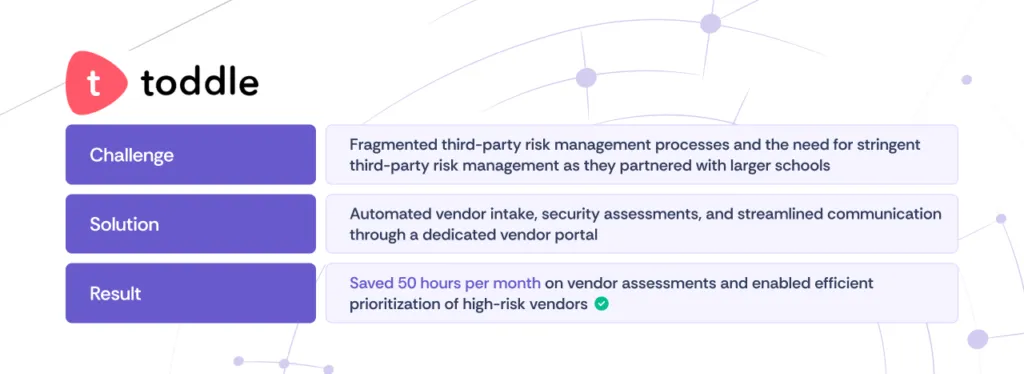
Click here to learn more about Toddle's vendor risk management journey.
Conclusion
Scrut's Vendor Management module is now further enhanced to simplify the complexities of third-party risk management. By utilizing AI and smart automated workflows, it streamlines vendor assessments, improves accuracy, provides actionable insights, and allows you to scale up your risk management program with ease.
Explore Scrut's Vendor Management today to transform your approach to vendor compliance and risk management!
FAQs
1. How does Scrut's AI-powered Vendor Management module work? Scrut's Vendor Management module automates 4 key aspects of the vendor vendor risk management process: determining inherent risk categories, creating tailored questionnaires, ensuring valid submissions, and facilitating risk review and mitigation tasks.
2. How does AI improve vendor risk identification? AI enhances vendor risk identification by automatically categorizing vendors into risk levels (high, medium, low) based on multiple factors before assessment. This proactive approach allows organizations to prioritize high-risk vendors early on, helping to mitigate potential issues before they arise.
3. Can I create customized questionnaires with this solution? Yes, the module allows you to create customized questionnaires. It analyzes vendor details and maps them to an internal question bank, ensuring that each questionnaire is tailored to accurately reflect the specific vendor's security posture.
4. How does the module ensure vendor responses are complete and accurate? Each questionnaire is sent to vendors on a dedicated portal designed for their access only. While typing in answers within the fields, they have the option to review responses with a click of a button. This kicks the AI reviewer in action and it flags any invalid or incomplete responses before they are submitted.
5. What role does AI play in risk mitigation? In the post-evaluation process, Scrut's AI helps generate relevant mitigation tasks and steps for each identified risk associated with each vendor response. This reduces manual effort of finalizing the right step and ensures that users have clear, actionable guidance on addressing potential issues.
6. How does AI assist in reviewing large volumes of vendor questionnaire responses? Scrut's AI rapidly scans and evaluates hundreds of questionnaire responses, identifying risks instantly and accurately. This efficiency minimizes the potential for human error and ensures a clear understanding of risks associated with a particular vendor, quickly.



